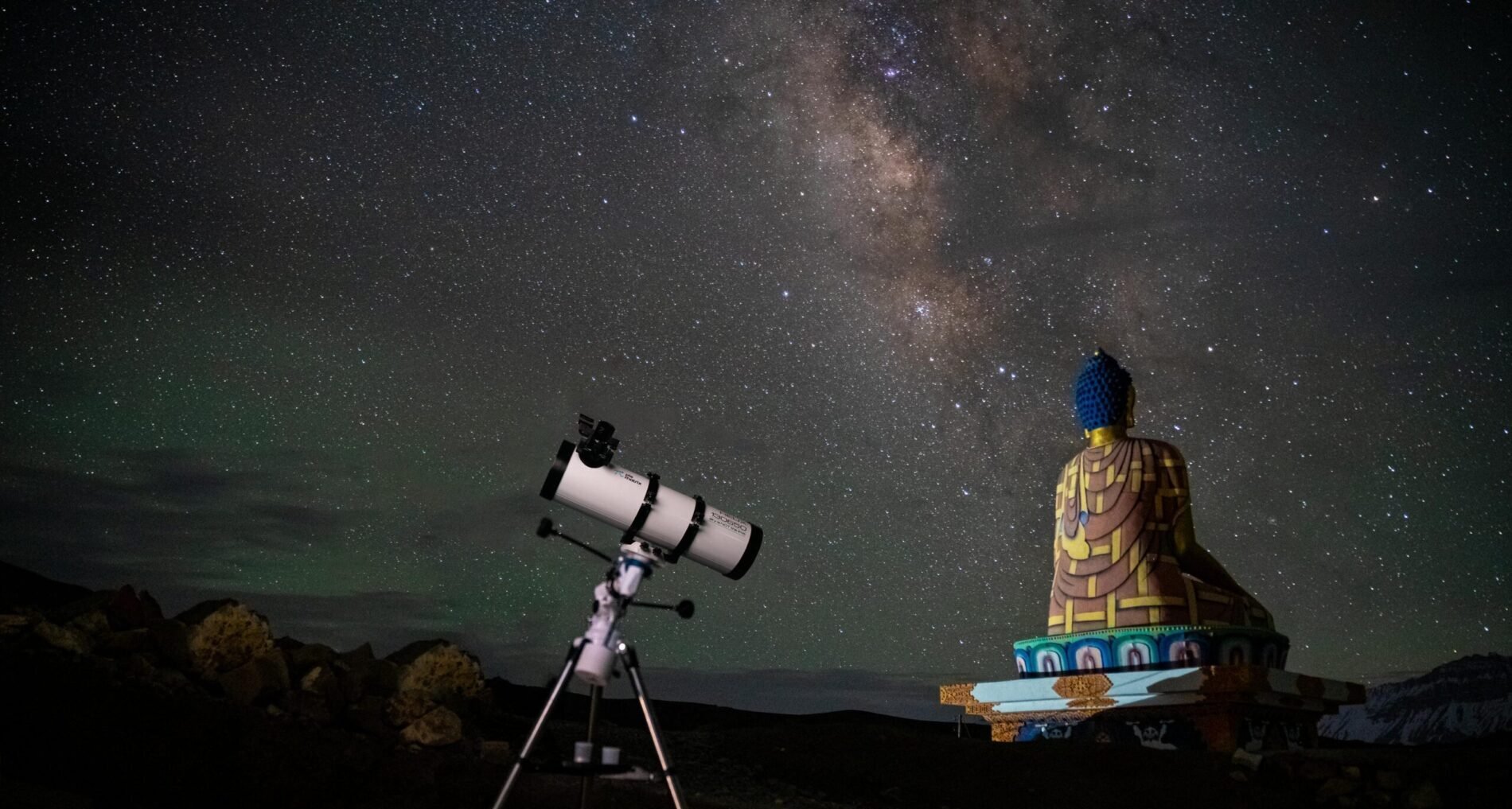For anyone new to astronomy, selecting the right optical instrument can make the difference between a frustrating experience and a rewarding journey through the night sky. While telescopes offer powerful magnification and detailed views of celestial objects, binoculars provide a wider field of view and greater portability. This guide will help you understand their uses, types, and how to choose the best one for your needs.
Why Use Telescopes and Binoculars for Astronomy?
Both telescopes and binoculars serve to magnify distant celestial objects, bringing the wonders of space closer to the observer. They enhance the ability to see planets, stars, nebulae, and galaxies that are otherwise invisible to the naked eye. Each has its advantages, making them suitable for different observational needs.
Advantages of Telescopes:
- High magnification power for detailed views
- Ability to see deep-sky objects like galaxies and nebulae
- Can be used with mounts and tracking systems for stability
Advantages of Binoculars:
- Wider field of view, making it easier to locate objects
- More portable and user-friendly for beginners
- Dual-eye viewing for a more comfortable experience
Types of Telescopes
Understanding the different types of telescopes is crucial when making a choice. Here are the three main types:
Refractor Telescopes
- Use lenses to gather and focus light
- Provide crisp and sharp images
- Require minimal maintenance
- Example: Celestron AstroMaster 90AZ – great for moon and planetary viewing
Reflector Telescopes
- Use mirrors instead of lenses
- Offer larger apertures at a lower cost
- Ideal for deep-sky objects
- Example: Orion SkyQuest XT8 – a good option for viewing galaxies and nebulae
Compound (Catadioptric) Telescopes
- Combine lenses and mirrors for compact design
- Versatile and suitable for both planetary and deep-sky observation
- More expensive than other types
- Example: Celestron NexStar 6SE – excellent for tracking objects automatically
Choosing the Right Telescope for Beginners
When selecting a telescope, consider the following:
- Aperture Size: The larger the aperture, the more light it gathers, improving image brightness and detail.
- Mount Type: Altazimuth mounts are simple and easy to use, while equatorial mounts help track celestial objects.
- Portability: If you plan to travel to dark-sky locations, a lightweight and compact telescope is ideal.
- Budget: Beginner telescopes range from $200 to $600. More advanced models can cost significantly more.
Binoculars for Astronomy
Binoculars are an excellent alternative to telescopes for beginners. They provide a broad view of the sky, making it easier to find objects. When choosing binoculars for astronomy, look for:
- Aperture (Objective Lens Size): A larger lens allows more light in, making objects brighter.
- Magnification: 7×50 and 10×50 models are great for stargazing, balancing power and brightness.
- Stability: A tripod mount can reduce shakiness for long observations.
Best Binoculars for Amateur Astronomy:
- Celestron SkyMaster 25×70: Excellent for moon and deep-sky objects
- Nikon 10×50 Action Extreme: Versatile and durable, good for handheld use
- Orion 15×70 Astronomy Binoculars: High magnification for a detailed view of celestial objects
Getting Started with Observing the Night Sky
What to Observe with Binoculars and Telescopes
- The Moon: Its craters and maria are visible with even the smallest optical instruments.
- Planets: Jupiter’s moons and Saturn’s rings are clear through most beginner telescopes.
- Star Clusters: The Pleiades (M45) and the Beehive Cluster (M44) are spectacular in binoculars.
- Galaxies and Nebulae: Andromeda Galaxy (M31) and Orion Nebula (M42) are great starting points.
Tips for Successful Stargazing
- Find a Dark Sky Location: Light pollution reduces visibility. Seek out remote areas for the best experience.
- Use a Star Map or Astronomy App: Helps locate celestial objects easily.
- Allow Your Eyes to Adjust: Dark adaptation takes 20–30 minutes for optimal viewing.
- Use a Red Flashlight: Preserves night vision while navigating your equipment.
- Keep Your Equipment Steady: Tripods and mounts improve observation quality.
Conclusion
Telescopes and binoculars each offer unique advantages for amateur astronomers. Beginners may find binoculars more accessible, while those interested in deeper celestial exploration may prefer a telescope. By understanding their differences, choosing the right model, and learning the basics of stargazing, you’ll be well on your way to exploring the cosmos with confidence.

